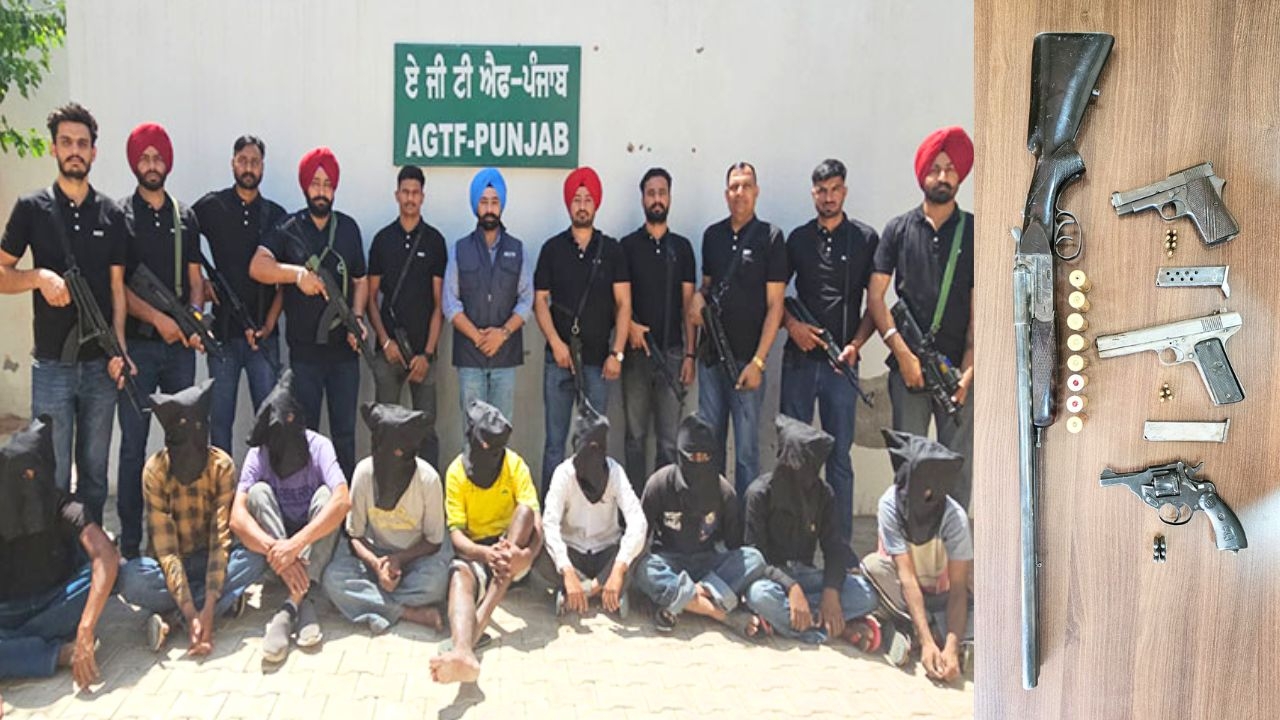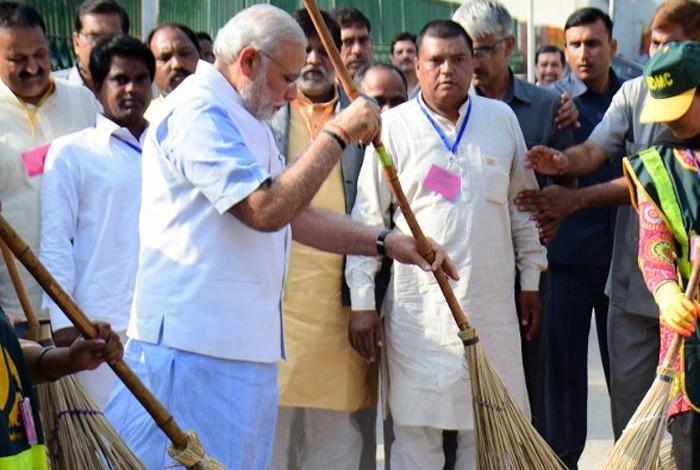
It was on 2 October last year, that scores of BJP leaders and celebrities, hundreds of bureaucrats, thousands of BJP workers and lakhs of people across the country wielded the broom to launch an extensive Clean India Movement or what we popularly call as 'Swachh Bharat Abhiyan' on the occasion of Mahatma Gandhi's birth anniversary.
The drive got significant weightage with Prime Minister Narendra Modi's face leading it and added to India's glory overseas with world leaders praising the PM for the initiative.
One year on, as a rather excited nation gears up for rejoicing the first anniversary of Swachh Bharat Mission, we would like to say - wait and deliberate, before you celebrate! Has the nation-wide campaign really been able to meet it colossal promises or has it fallen out on actual grounds?
Toilets
A huge chunk of promises made during the campaign were centered around the construction of toilets. However according to the figures released by the Urban Development ministry, the mission is acutely lagging behind to achieve this goal. Here are the numbers released for urban areas:
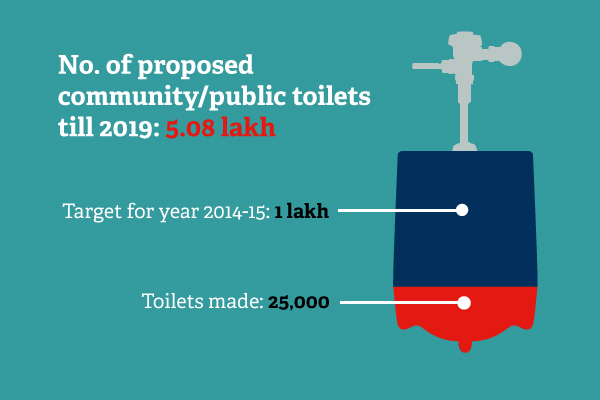
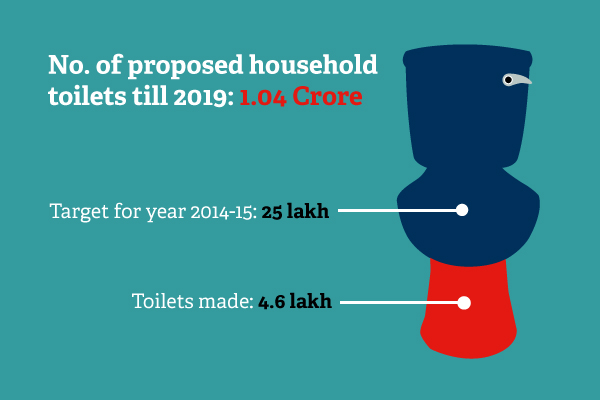
Infographics: Shoumik Biswas
- Construction of toilets in urban areas under the ambitious 'Swachh Bharat' mission is yet to take off in 14 states and Union Territories including Assam, Bihar, Jharkhand, Kerala, Tripura and West Bengal.
For Rural India
- The initiative plans to construct 12 crore toilets in rural India till 2019. As against the target, the Ministry of Drinking Water and Sanitation, which is implementing the programme in rural areas, has managed to build 95.23 lakh toilets so far. But this figure includes 43.81 lakh toilets that were built between April and October 2014, before the Clean India campaign was launched, under previous government programmes to improve sanitation coverage, including the Nirmal Bharat Abhiyan.
While making a promise for eliminating open defecation by 2019 in the country, the Prime Minister made an emotional appeal to the citizens of India on Independence Day last year. He said, "Has it ever pained us that our mothers and sisters have to defecate in open? Poor womenfolk of the village wait for the night; until darkness descends, they can`t go out to defecate. What bodily torture they must be feeling, how many diseases that act might engender. Can't we just make arrangements for toilets for the dignity of our mothers and sisters?"
But the pace at which toilets are being constructed presents a picture of utter dismay. The gravity of the situation can be determined by looking at the national capital itself.
Solid waste disposal
On an average India generates 1,27,486 tonnes of waste on a daily basis.
One of the key targets of the Swachh Bharat Mission is to achieve 100 per cent door-to-door collection of solid waste, its transportation and disposal, by the year 2019. However, in the run to meet the target, only 2 of the targeted 1,000 cities have hit the mark till now. Not one of the targeted 100 cities have reported cent per cent processing and disposal of waste.
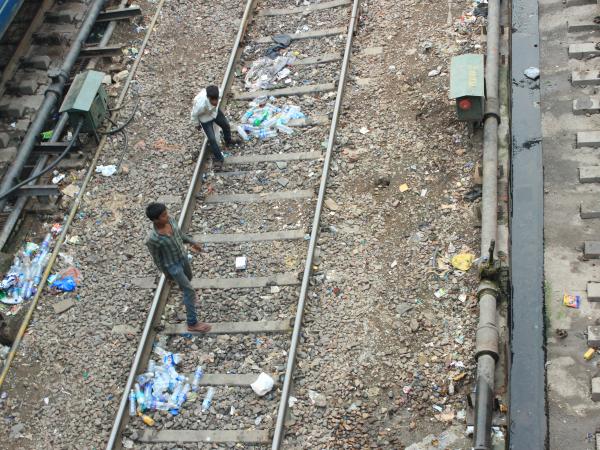
A glimpse of New Delhi Railway Station. (Photo: Ishan Kukreti/Catch News)
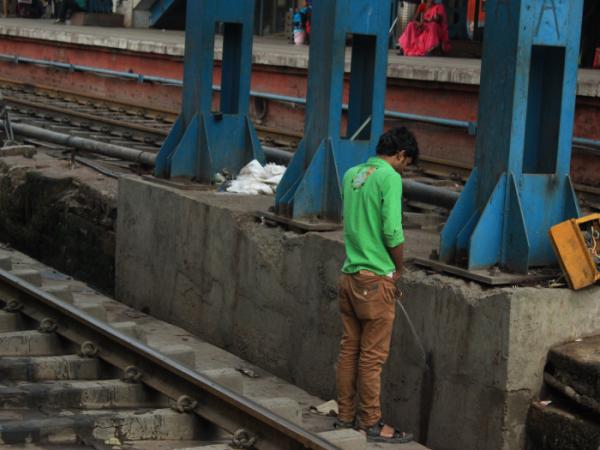
(Photo: Ishan Kukreti/Catch News)
According to a report published by the Indian Express, only Port Blair and Chandigarh have so far managed to establish a system of collecting and transporting waste from every household.
Recently the Urban Development ministry wrote to all states requesting them to levy a user charge to support solid waste management services. It has admitted that inadequate budget of municipalities can derail the Swachh Bharat initiatives in urban areas.
Manual Scavenging
According to the 2011 census, there are 26 lakh pit latrines in India which are manually scavenged by 1,80,000 people.
In the long list of promises, Prime Minister also talked about eradicating manual scavenging. However, no significant step has been taken in this regard. Do you know that India banned manual scavenging in 1993 and the Prohibition of Employment as Manual Scavengers and Their Rehabilitation Act of 2013 reinstated the ban.
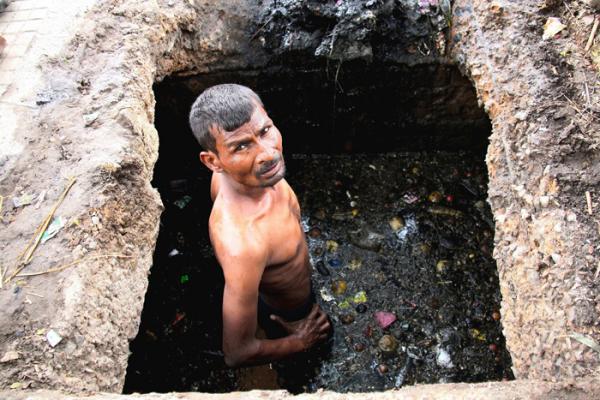
Photo: Getty Images
But unfortunately so far the law has not been implemented. Moreover, the workers who perform the scavenging task are inhumanly treated and paid minimal wages.
Another shameful factor is that their job is still connected to their caste and there are generations of several families who are employed in the same profession and are not able to get out of it due to lack of employment opportunities.
Civic awareness
A large number of institutions across India, including schools, colleges, government and some private offices were highly enthusiastic when the campaign was launched initially. The fervour was visible through pledges, flashy posters and cleaning drives. But a year later this exhilaration has tremendously boiled down.
The idea of the campaign to sensitise people towards sanitation has not been able to attain a commendable status. While it is difficult to gauge the changed mood in numbers, the amount of enthusiasm for the campaign has arguably simmered down.
Maybe sometimes, a reminder is in order?



![BJP's Kapil Mishra recreates Shankar Mahadevan’s ‘Breathless’ song to highlight Delhi pollution [WATCH] BJP's Kapil Mishra recreates Shankar Mahadevan’s ‘Breathless’ song to highlight Delhi pollution [WATCH]](http://images.catchnews.com/upload/2022/11/03/kapil-mishra_240884_300x172.png)

![Anupam Kher shares pictures of his toned body on 67th birthday [MUST SEE] Anupam Kher shares pictures of his toned body on 67th birthday [MUST SEE]](http://images.catchnews.com/upload/2022/03/07/Anupam_kher_231145_300x172.jpg)






